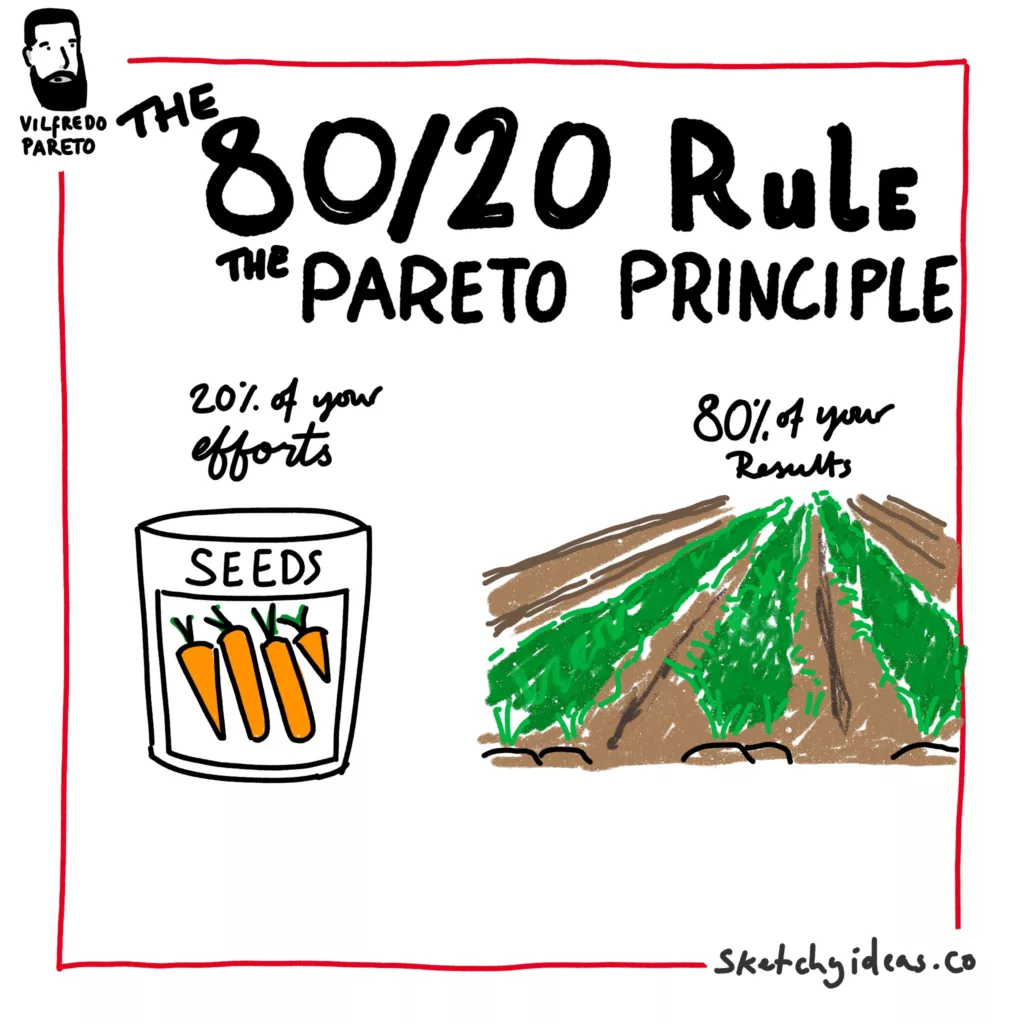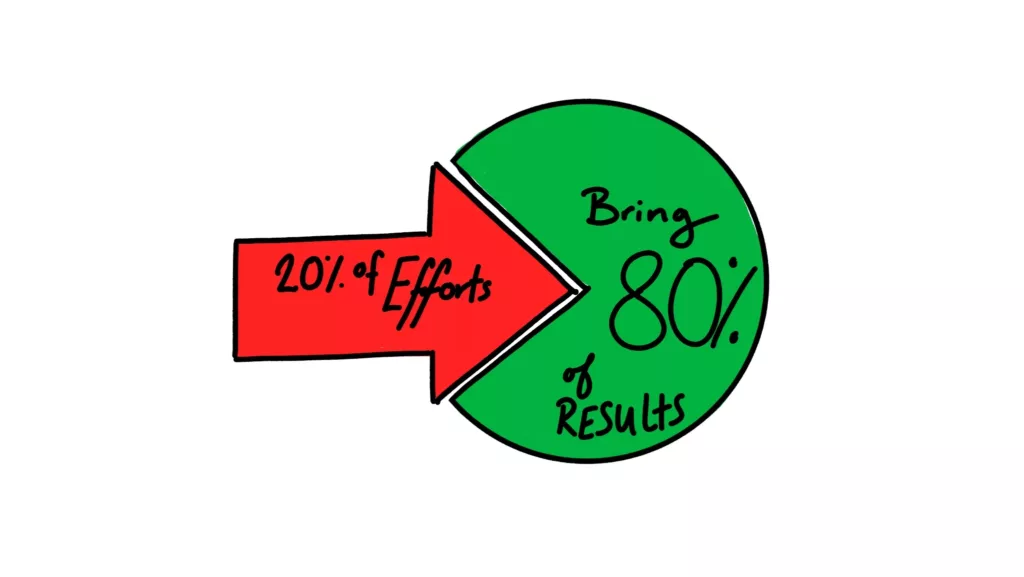Not all actions are equal.
Some are far more effective than others. That’s one of the core lessons of the Pareto principle, but its value goes far deeper than this obvious truism.
So let’s explore this mental model and how it can help you do more with less.

The origin of the 80/20 rule: Vilfredo Pareto’s story
Vilfredo Pareto was an Italian economist. While he only started working in economics in his Mid-forties, he made a key discovery. He noticed that 80% of Italy’s land was owned by only 20% of the population.
Eventually, he published a textbook that stated the Pareto distribution (20% own 80%) as a constant throughout human society.
Later, Jospeh M. Juran expanded this principle. He noticed the ratio between input and output wasn’t limited to wealth.
What is the Pareto Principle?

The Pareto principle states that 80% of results or resources come from 20% of the efforts.
- As a freelancer, 20% of your clients will account for 80% of your revenue
- 20% of your blog posts will account for 80% of your traffic
- In software, 20% of your bugs will account for 80% of your complaints
The actual numbers may vary, but the general principle holds true. And that means there’s a clear application.
Focus on the crucial 20%
It can be tempting to focus on what is working worse.
After all, if we can “fix” what’s broken, we’ll see amazing results. But it is rarely so easy. The reasons for things that aren’t working are usually complex and take a lot to fix.
It’s far easier to focus on what is successful and cause it to bear more fruit.
For example,
- If you remove the 80% of clients who pay less, you open up time to do more work with the best-paying clients or find another client who pays as well.
- It’s better to refine the 20% of articles that perform best, not those which perform badly.
- If you fix the 20% of bugs that cause 80% of complaints, you’ll have far fewer complaints.
The key takeaway is that by focusing on what contributes the most, we can see oversized results.
In some cases, you can achieve a snowball effect. Reaching the influential 20% can lead to a tipping point that persuades the holdout 80%.
But is the Pareto Principle true?
Not everyone agrees with the Pareto Principle.
After all, it is a simplification. Sometimes the ratios are 90/10 or 70/30. Other times there are reasons to focus on the long tail (such as an SEO strategy for a competitive keyword).
However, just like all mental models, the Pareto principle provides a useful perspective and guidelines for what we should do.
Focus on what drives the most results
Vilfredo’s insight has travelled a long way from the Italian landscape.
Now, this mental model can help you in any area you operate in. From driving greater marketing results, finding the crucial issues to solve, or knowing which stakeholders to persuade. Identifying the key 20% in any activity will serve you well.
And save you countless hours as well.

Leave a Reply